This time, I’ll share my experience and story of chasing the Aurora Australis in Glenorchy, New Zealand.
What is Aurora Australis?
The aurora phenomenon is one of nature’s mesmerizing wonders, where the night sky is illuminated by enchanting lights. There are two types of these spectacular auroras: the Aurora Borealis and the Aurora Australis. The Aurora Borealis graces the Northern Hemisphere, while the Aurora Australis lights up the Southern Hemisphere. Both offer a stunning display of swirling, dancing lights in the night sky, a natural beauty that captivates anyone lucky enough to witness it.
Where and When is the Best Time to See the Aurora Australis?
One of the most awe-inspiring phenomena on Earth is the aurora, a colorful light show in the sky created by solar activity. Auroras occur at various locations on Earth at any given time. However, even when solar activity is calm, auroras might appear faint or occur at very high altitudes, making them less visible. To fully appreciate the beauty of an aurora, there are a few things you need to know.
The primary requirement is a very dark, cloud-free sky. Additionally, it’s essential to understand that auroras are divided into two main types based on their location: Aurora Borealis and Aurora Australis. What is Aurora Australis, also known as the Southern Lights? Compared to the Aurora Borealis, the Aurora Australis is often harder to see due to the lack of land around the South Pole that allows for observation. However, with enough patience, you can still witness it from several southern locations on Earth, such as New Zealand and Australia.
In Australia, auroras can occur year-round in Tasmania. The best places to view the aurora in Tasmania with minimal light pollution include the Tasman Peninsula, Fortescue Bay, Lime Bay, and White Beach. Meanwhile, in New Zealand, some of the best locations to see the aurora are Lake Tekapo and the summit of Mount John, as these areas have very little light pollution.
You might wonder why not try to see the aurora directly in Antarctica. Although Antarctica is free from light pollution, the extreme conditions there make access difficult. Most trips to Antarctica are only available during the summer, limiting the chances of seeing an aurora. According to a guide created by Charles Deehr, professor emeritus and aurora forecasting expert at the University of Alaska Fairbanks’ Geophysical Institute, the best time to see auroras is during winter. This means your best chances are between September and April for the Aurora Borealis, with peak activity usually occurring in March. For the Aurora Australis, the best time is May. However, it’s important to remember that weather is also a crucial factor. The sky must be dark, cloudless, and you should also consider the timing of the sunrise and sunset. A bright moon can also interfere with observations, so pay attention to the moon’s phase when planning your aurora-watching trip.
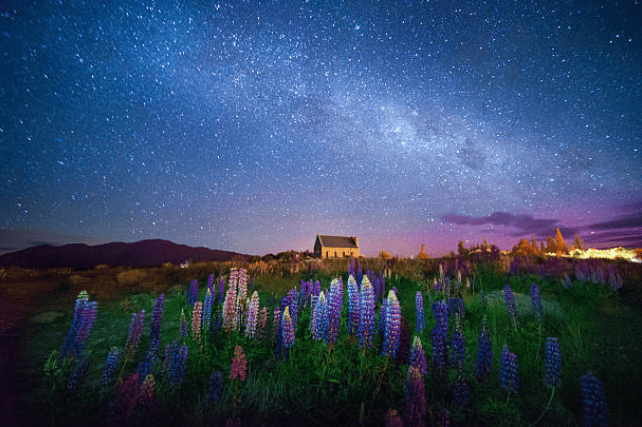
Chasing auroras requires persistence and patience. The beauty of a sky filled with dancing lights is an extraordinary reward for those willing to search and wait. Your aurora may not be visible on the first visit, but with good knowledge and planning, you’ll have a better chance of witnessing one of Earth’s most remarkable natural phenomena.
Visiting Glenorchy to Capture the Aurora Australis
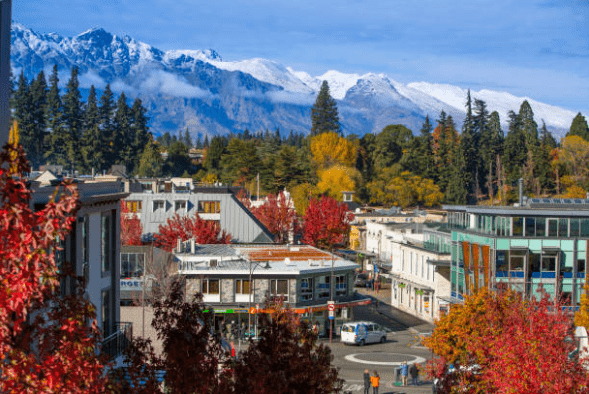
Visiting Glenorchy was supposed to be a side trip during this road trip in New Zealand, not a primary destination like Queenstown, Wanaka, or Auckland. So, I could have removed it from the itinerary at any time. However, for some reason, it seemed fate automatically brought me to this town. Starting with the affordable and comfortable campground in Queenstown being fully booked, and the less-than-ideal weather in Queenstown. Even though the car’s fuel was running low, we continued to Glenorchy without knowing if there would be an open gas station when we arrived.
For context, I left Queenstown around 5 PM, with an estimated arrival in Glenorchy around 6 PM. Although the sun wouldn’t set until after 9 PM, gas stations and mini markets typically close around 5 PM. So, we just pressed on, focusing on reaching Glenorchy first and figuring out the rest once we arrived.
About an Hour’s Drive from Queenstown
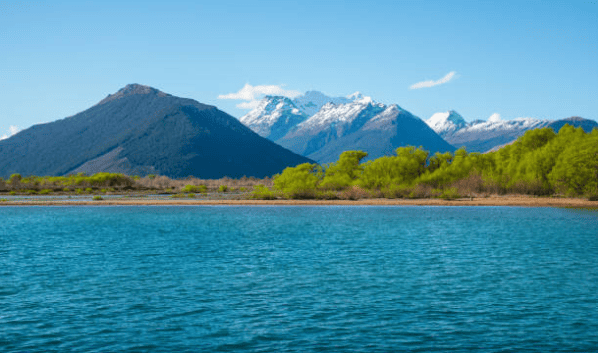
The drive from Queenstown to Glenorchy takes about an hour. The first destination was one of the campgrounds in Glenorchy. It’s better to secure a campsite than risk camping randomly. In New Zealand, there are plenty of campsites, but you can’t just camp anywhere; you could be fined heavily. Fortunately, despite the car’s low fuel, we arrived in Glenorchy without any issues. The bad news was that Mrs. Woollys Campsite, the campground we aimed for, was already full. We had planned to stay in this town to hunt for the Aurora Australis. The cost per night was indeed affordable, just 15 NZD per person with bathroom facilities, and the place itself was nice, so it’s no wonder the campsite in Glenorchy is very popular.
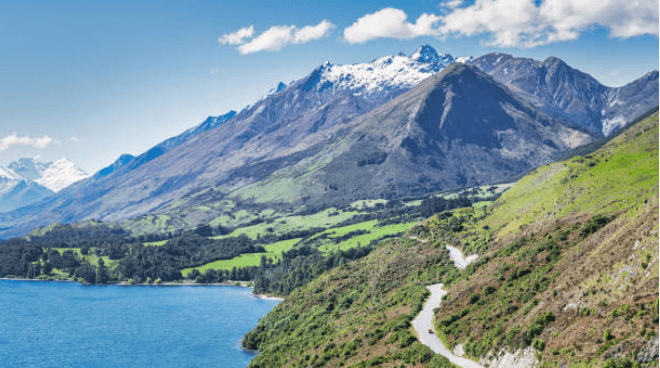
The lesson learned here is to always book in advance when visiting popular places or small towns with few campgrounds. Luckily, after some pleading, we managed to secure a spot to pitch our tent near the bathroom. It wasn’t the best location, but it was far better than camping randomly and getting fined.
A Town for Adventurers
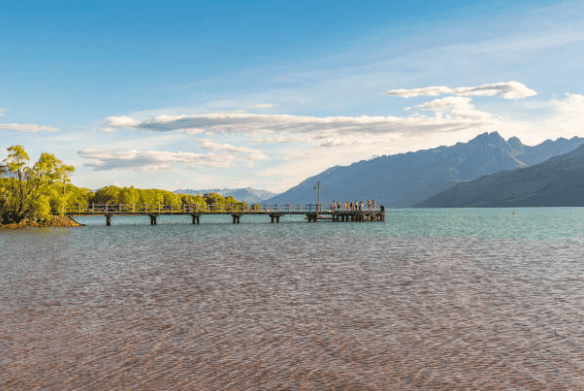
At first glance, Glenorchy isn’t much different from Queenstown, another town for photographing the Aurora Australis. It’s located near Lake Wakatipu and is a destination for adventurers, trekking, and hiking enthusiasts. There are indeed several trekking routes here, but compared to Queenstown, it’s much quieter, even during peak season. However, what I was most interested in was the night view at the end of Lake Wakatipu by the small Glenorchy wharf.
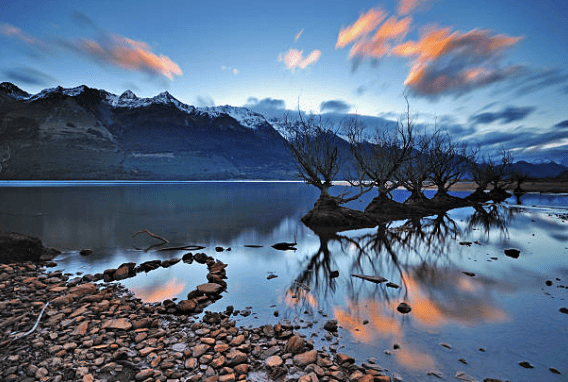
Yes, while in a country with minimal light pollution, I always take the opportunity to capture the night sky full of stars. You could say that photographing the night sky in New Zealand is super easy! No need to venture deep into remote areas. Light pollution levels in New Zealand are very low, even in small towns like Glenorchy. The spot I had my eye on before arriving was the small Glenorchy wharf. I imagined the Milky Way stretching into the sky from the horizon, filled with mountains. The only real challenge in photographing the night sky in New Zealand is the cold temperatures, which can almost reach freezing.

I also had to wait until midnight for the Milky Way to be visible. I visited New Zealand in January, even though the Milky Way is best seen after March. But no worries, it’s better than not seeing it at all, right?
Chasing the Aurora Australis from Glenorchy Wharf
One layer of clothing, a thick jacket, a windbreaker, a hat, gloves, and thick pants – these are the must-wear items when chasing the night sky in New Zealand. Even though it’s summer, temperatures can still drop below freezing. Even if it’s warm, the temperature usually stays in the single digits. Don’t forget the tripod to keep the camera steady and minimize shaking, my Sony A6000 camera, and a 14mm manual f/2 lens. Meanwhile, I used the free version of the SkyView app on my Android smartphone to find the Milky Way’s position. Once everything was ready, I just needed to set the lens to f/2 aperture and a 30-second shutter speed. I also attached a remote to the camera, so the camera wouldn’t shake when pressing the shutter.
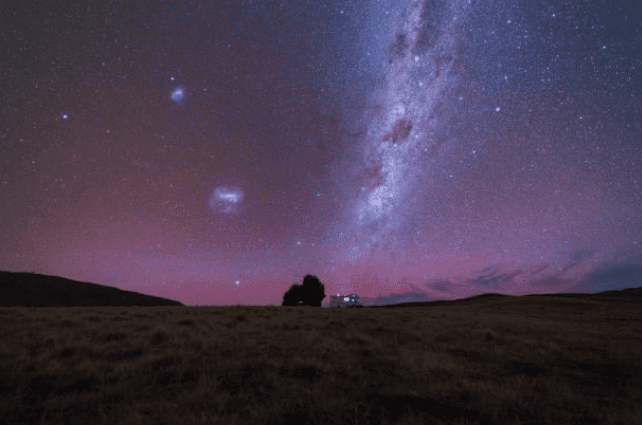
I had 30 seconds to gaze into the cold New Zealand night while waiting for the picture to be taken. Yes, that’s the reality behind beautiful night sky photos – long moments of waiting for the shot to be complete. But sometimes, in those moments of waiting, brilliant ideas can come to mind. After the first shot was done, I checked the photo on the camera. Wait, what? There’s something strange in the photo. A pinkish-orange light appeared in the picture. Could that be… the Southern Lights, also known as the Aurora Australis, which is rarely seen? Or was it just light pollution from Queenstown?
Because I wasn’t quite convinced, I took several more shots. Despite my eyes growing tired, the temperature dropping, and the clock nearing 1 AM, I kept pressing the camera shutter and inspecting each photo. The pinkish-orange sky remained, not fading but growing stronger. I became more confident that it was indeed the Aurora Australis or Southern Lights, not a camera error or light pollution. Especially after checking one of the websites that predicts auroras, the chances of seeing an aurora were high that night.
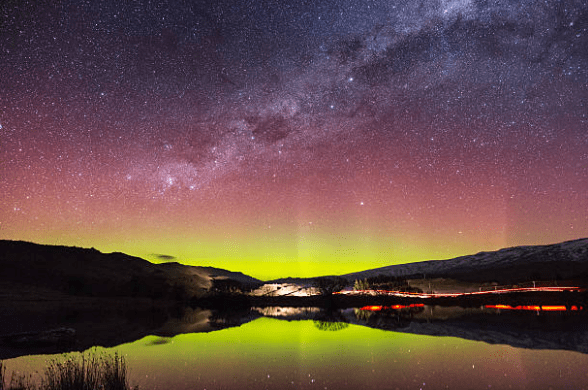
Not wanting to miss out, I continued photographing at the Glenorchy wharf. I didn’t forget to take a photo of myself with the Aurora Australis in the background. When else would I be this lucky? They say it’s pretty challenging to capture the Southern Lights. Some say you need to travel to the southern tip of Tasmania in Australia, to New Zealand’s southernmost city, Invercargill, or even charter a private plane to fly south toward Antarctica. I can’t imagine how much that would cost or how long the wait would be just to get the perfect Aurora shot. Meanwhile, without any prior planning, I unexpectedly captured an extraordinary photo of the Aurora Australis.
